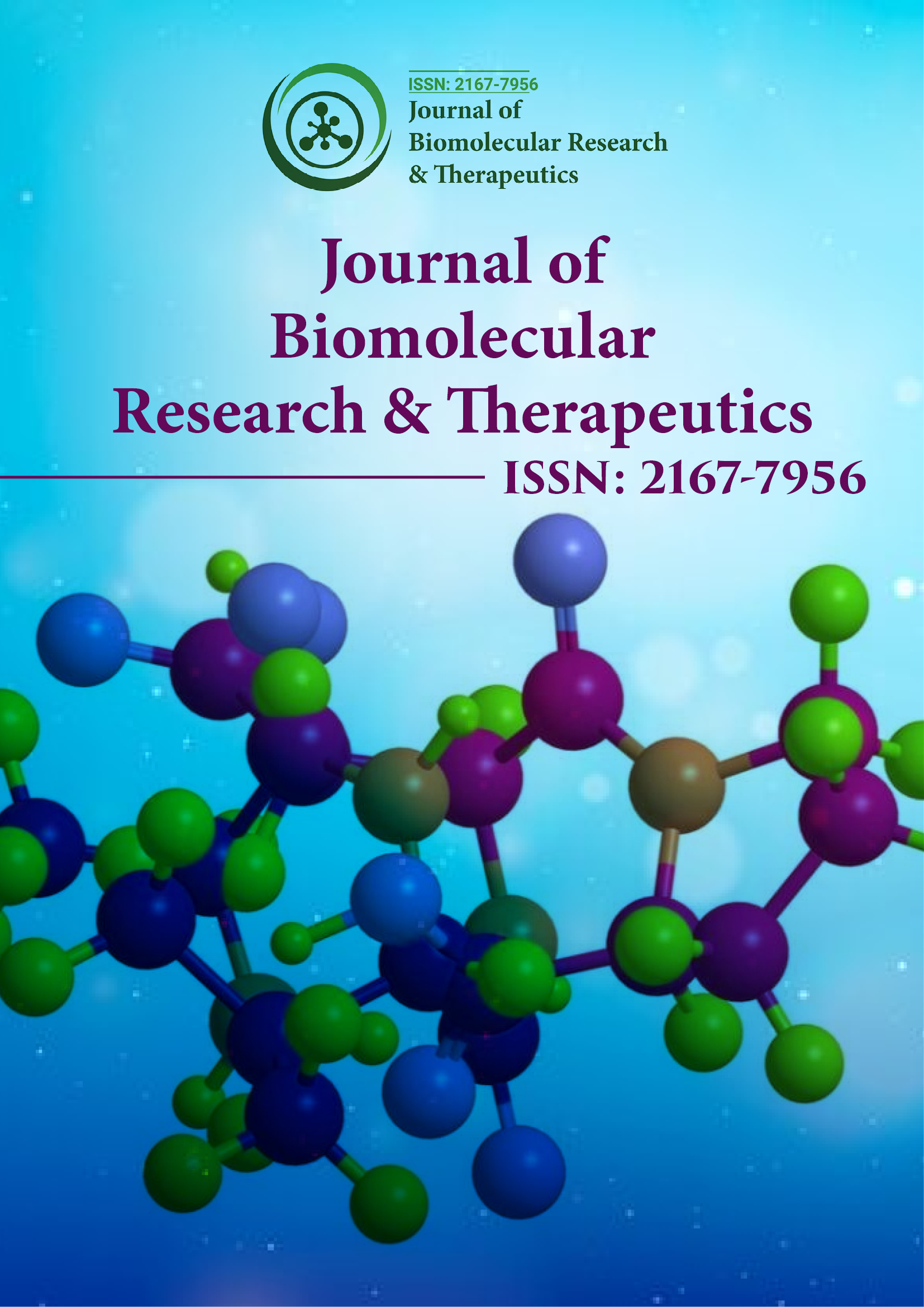Indexed In
- Open J Gate
- Genamics JournalSeek
- ResearchBible
- Electronic Journals Library
- RefSeek
- Hamdard University
- EBSCO A-Z
- OCLC- WorldCat
- SWB online catalog
- Virtual Library of Biology (vifabio)
- Publons
- Euro Pub
- Google Scholar
Useful Links
Share This Page
Journal Flyer

Open Access Journals
- Agri and Aquaculture
- Biochemistry
- Bioinformatics & Systems Biology
- Business & Management
- Chemistry
- Clinical Sciences
- Engineering
- Food & Nutrition
- General Science
- Genetics & Molecular Biology
- Immunology & Microbiology
- Medical Sciences
- Neuroscience & Psychology
- Nursing & Health Care
- Pharmaceutical Sciences
Opinion - (2025) Volume 14, Issue 2
Exploiting Signal Transduction Mechanisms for Oncology Therapies
Haruto Sato*Received: 28-Mar-2025, Manuscript No. BOM-25-29596; Editor assigned: 31-Mar-2025, Pre QC No. BOM-25-29596; Reviewed: 14-Apr-2025, QC No. BOM-25-29596; Revised: 19-Apr-2025, Manuscript No. BOM-25-29596; Published: 28-Apr-2025, DOI: 10.35248/2167-7956.25.14.436
Description
Signal transduction pathways are crucial communication systems that allow cells to respond to external stimuli, governing processes like growth, differentiation and survival. In cancer, these pathways often become disrupted, leading to abnormal cell proliferation and resistance to cell death. As a result, targeting these signaling routes has become a key focus in cancer treatment, enabling the development of drugs that directly inhibit cancer-driving mechanisms. A well-characterized example is the Epidermal Growth Factor Receptor (EGFR) signaling cascade. EGFR, a receptor tyrosine kinase, is frequently mutated or overexpressed in cancers such as lung and colorectal cancer. To counter this, therapies like tyrosine kinase inhibitors and monoclonal antibodies have been designed to block EGFR activity. These treatments are especially effective in patients with specific EGFR mutations, underlining the value of precision medicine.
Another vital signaling axis is the PI3K/AKT/mTOR pathway, which is involved in cell survival, growth and metabolism. Alterations in this pathway are common in various tumors, making it a prime therapeutic target. Several inhibitors of PI3K and mTOR have reached clinical practice, with ongoing research evaluating their combined use with other treatments to overcome resistance mechanisms. A persistent challenge in targeting signaling pathways is drug resistance. Tumors frequently activate alternative pathways or acquire new mutations to evade the effects of therapy. To counter this, researchers are exploring combination therapies that simultaneously inhibit multiple pathways, thereby reducing the chance of resistance. For instance, pairing MEK inhibitors with immune checkpoint inhibitors is being studied to boost antitumor activity.
In addition to these well-known pathways, newer research is shedding light on less explored ones like the Hippo and Wnt pathways. These systems regulate cell proliferation, tissue size and stem cell function and their dysregulation contributes to cancer progression. Drug candidates targeting these emerging pathways are currently under early-stage development. The success of pathway-specific treatments relies heavily on molecular diagnostics. Identifying biomarkers such as mutations, amplifications, or protein overexpression helps determine which patients are most likely to benefit from targeted therapies. Incorporating such testing into clinical workflows ensures treatments are aligned with each patient's unique tumor biology.
Technological progress in genomics and proteomics is deepening our understanding of how signaling pathways vary between and within tumors. Cancers are no longer seen as uniform masses but as complex systems with diverse cell populations, each driven by distinct signaling changes. Single-cell sequencing and spatial transcriptomic are now uncovering how these pathways behave in different tumor regions and evolve during treatment. This shift from static testing to dynamic monitoring represents a new era in cancer care. An important aspect of cancer signaling is the crosstalk between different pathways. Tumor cells often activate multiple interconnected routes to ensure survival, even when one is inhibited. For example, activation of the PI3K/AKT pathway can offset the effects of blocking the MAPK pathway. To address this, scientists are designing multi-targeted therapies and drug combinations to block several signaling channels simultaneously, making it harder for cancer cells to adapt.
Epigenetic regulation of these pathways is another area of growing interest. Non-coding RNAs and chromatin-modifying enzymes can alter the expression of key signaling molecules without changing the DNA itself. For example, changes in histone acetylation may boost the expression of growth factor receptors or silence inhibitors of signaling pathways. Combining epigenetic modulators with targeted therapies could offer a more comprehensive attack on cancer's survival mechanisms. The Tumor Microenvironment (TME) also plays a critical role in influencing signal transduction. Immune cells, fibroblasts and extracellular components in the TME secrete growth factors and cytokines that can intensify cancer signaling. Moreover, low oxygen conditions (hypoxia) within tumors can activate adaptive pathways like HIF-1, promoting resistance and angiogenesis. Therapies targeting these interactions are emerging as complementary strategies to weaken the tumor’s support system.
In parallel, Artificial Intelligence (AI) and machine learning are accelerating drug discovery by analyzing massive datasets to uncover hidden patterns in signaling networks. AI can predict which pathways are active in specific tumor subtypes and suggest effective drug combinations. Simulations of signaling dynamics can also identify weak points in the cancer network that traditional methods may overlook. As research continues to unravel the complexity of signal transduction in cancer, it becomes increasingly clear that a systems biology approach is essential. By integrating insights from genomics, epigenetics, tumor microenvironment studies and advanced analytics, future therapies can be tailored more precisely and effectively. These innovations hold great promise in transforming cancer treatment into a more targeted, durable and potentially curative endeavor.
Citation: Sato H (2025). Exploiting Signal Transduction Mechanisms for Oncology Therapies. 14.436
Copyright: © 2025 Sato H. This is an open access article distributed under the terms of the Creative Commons Attribution License, which permits unrestricted use, distribution and reproduction in any medium, provided the original author and source are credited

